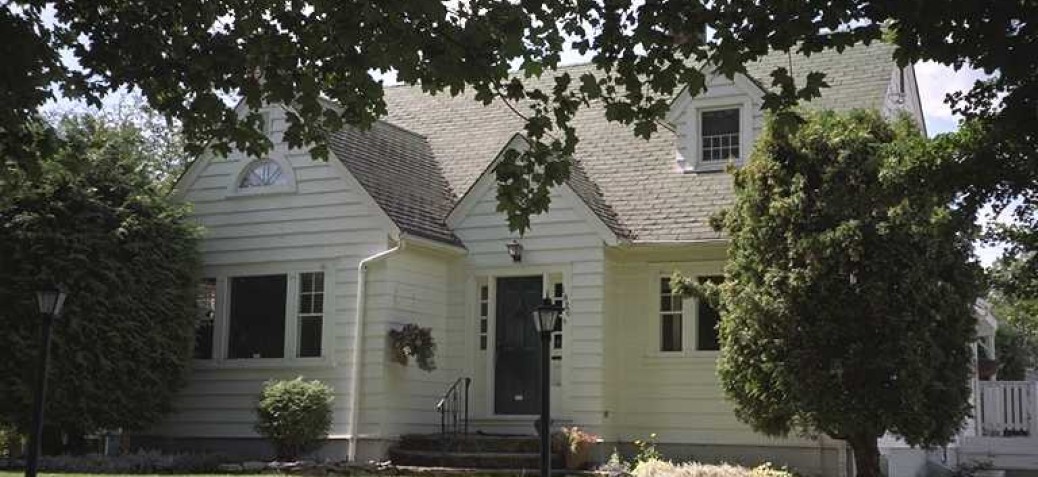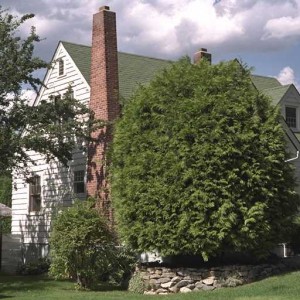Brown House
Place Description
The historic place is the 1.5-storey white, wood-sided Brown House, built in 1940 in the Cape Cod Cottage style, and located at 1826 Maple Street in Kelowna's South Central neighbourhood, within the Abbott Street Heritage Conservation Area.
Heritage Value
This house has value as a good example of the 'Cape Cod Cottage', a style that acknowledged modernist design in a conservative way during a period of architectural change; and also for representing houses built from stock, mail-order plans. It has historical value for its association with Ralph W. Brown, who was important for his involvement in settling Kelowna's war veterans.
The style illustrates a resolution to the dilemma faced by Canadian and American architects and designers as they chose how to react to European modernism. This approach was to simplify building-forms without entirely eliminating references to the past. The Cape Cod Cottage represents this trend well. It was popularized in the United States as a variant of the Georgian Revival and was inspired by revivals of American Colonial building, a trend that was popularized in part by the development of Colonial Williamsburg (in Virginia). Period-inspired elements include the wood clapboard siding and the steep gables and dormer. All this is done with simplicity of form and without any direct historical quotations, an acknowledgement of modernism.
The house was built for Ralph W. Brown in 1940, following a design package acquired from Simpsons Plan Services. The builder was A.L. Patterson, who was active locally and seems to have built most of the houses in this Maple Street subdivision, established about 1935 in the filled-in oxbow of Mill Creek.
The house has value as well for its association with Ralph W. Brown. Born on the prairies, he moved to Trout Creek in Summerland with his parents in 1903. He was a student at Guelph Agricultural College in Ontario when the First World War broke out in 1914, and he hastened to enlist. After returning from the war he found employment with the federal government. In the 1930s he was a field supervisor in Kelowna for the federal Soldier Settlement Board, a scheme to resettle veterans on agricultural properties. After World War II he continued in a similar capacity, as regional supervisor for the federal Veterans' Land Administration, as the program was now renamed. Brown was involved in agricultural subdivisions in Vernon, Bankhead, Lakeview Heights, Kelowna, Penticton, Westbank, and Cawston. These greatly reshaped the land ownership patterns in the Okanagan Valley. Brown retired around 1960.
Character Defining Elements
- Good example of the Cape Cod Cottage style, characterized by features such as the simple cross-gabled plan
- Steeply gabled roof with two smaller projecting gables on the street elevation - the minor gable over the entrance and the gabled dormer to the right of the entrance
- Red brick chimneys
- Semi-circular window in the front gable
- Double-hung windows with eight-over-one and four-over-one wood sash
- Broad horizontal wood siding
- White-painted siding with dark window and door trim
- Large maples in front, rock retaining walls and stairs, many large shrubs





